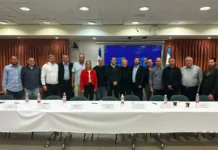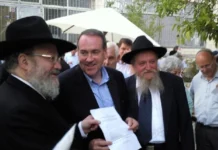What precisely are we showing up to receive? The debate over the extent of revelation has raged for millennia: Were the ten utterances revealed? Or the five books? Or did Moses simply receive the silent aleph at the start of the first commandment? The rabbis of our Talmud joined this debate and, perhaps subversively, wrote their own work into the work of revelation. What was revealed at Sinai? According to this expansive read, the entire oral tradition was revealed, complete with intricacies only rabbinic masters could understand – an Oral Torah to accompany the Written (1).
By adding their own oral tradition to this epic moment at Sinai, the rabbis show us that each generation engages in revelation in their time. Just as the rabbis began to understand revelation to include their most precious project (the Oral Torah), so too each generation may receive that aspect of the oral tradition uniquely understood and interpreted in their time. This expansive Torah is an ever-growing process, passed through the struggles, stories, and successes of each generation. Sometimes the work of resistance is the work of revelation, the big cacophonous moments and the long, unfolding path across generations. And our generation, like every other, is not birthed in isolation. Rather we stand at Sinai side by side with those who have fought for liberation and journeyed through the deserts before us.
What is this Torah that we receive from our ancestors (familial, cultural, and political) and why is this important for the Jewish resistance of our time?
This revealed inherited wisdom teaches us to:
1) Stay grounded in your own stories.
These stories have the power to connect us to a shared vision (or many visions) and to foster empathy for the complexity and humanity imbedded in the stories of others.
2) Learn from the revealed Torah of our ancestors, teachers, mentors, and elders.
Their examples of courage, creative resilience, and effective action can help inspire and inform our own.
3) Oral tradition, unlike written, is not received in a moment.
We can imagine (perhaps) the mythic earth-shattering moments of Sinai – like the gift of a life-changing book from the most powerful of friends, but the nuances our expansive oral tradition is not revealed on one foot. It requires asking questions and real listening, patience, reflection, and repetition. Perhaps the work of revelation requires that we sit at Sinai with the elders of our movements and ask: what worked and how did you resist? How did you sustain yourself and who did you love? What did you fear and with whom did you sing? And where is our world now compared to where we want it to be? (2)
This year when we meet at the mountain on Shavuot, may our #RevelationfortheResistance be the unfolding Torah of oral tradition, expansively defined: the resistance and inherited wisdom of our ancestors received and revealed in each unique generation.
This is the Torah we have been waiting for.
(1) One particularly poignant example of this rabbinic move is the story of Moshe in the Beit Midrash of Rabbi Akiva (Talmud Menachot 29b). Rabbis Arthur Waskow and Phyllis Berman explore this idea in Freedom Journeys: The Tale of Exodus and Wilderness across Millennia (p.195)
(2) See last week’s Torah for the Resistance piece by Mimi Micner about the this-worldly qualities of Malchut, where she names this question and others.


























